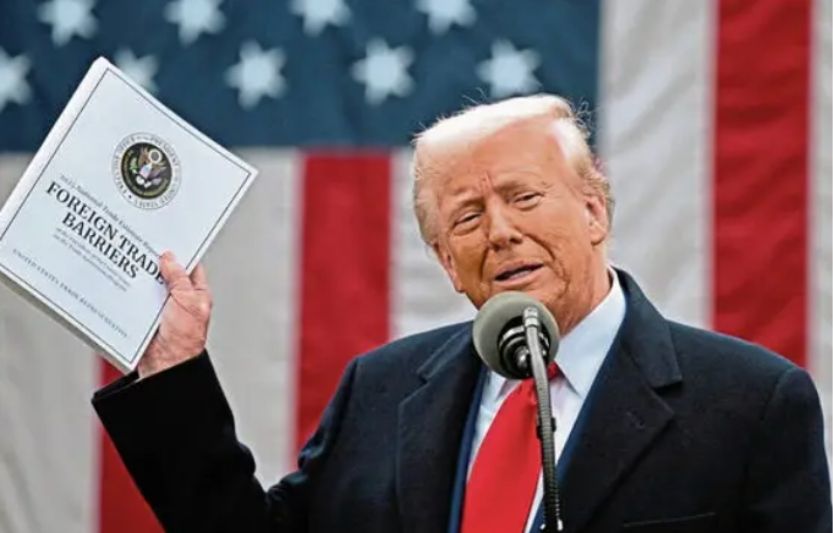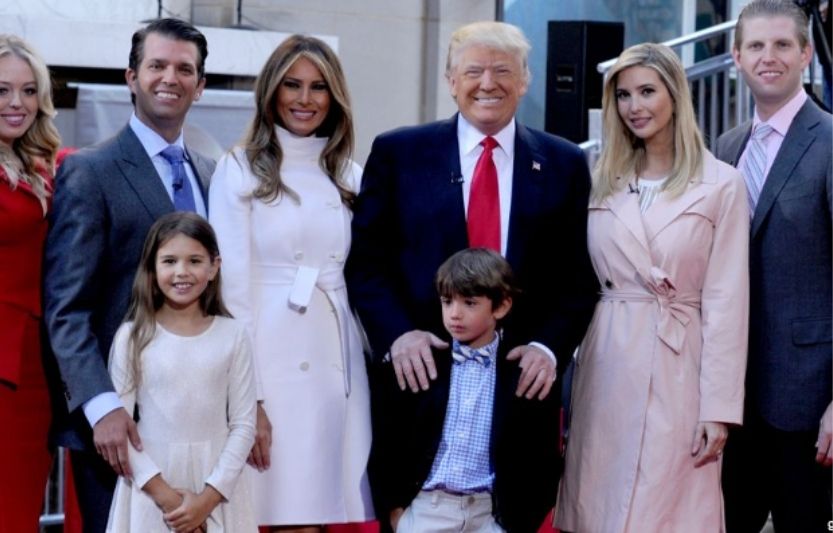Introduced during Donald Trump’s presidency, Trump Tariffs refer to a series of import taxes targeting foreign products with the aim of protecting domestic industries. Consequently They became a centerpiece of his trade strategy and were rooted in his “America First” economic philosophy, which prioritized U.S. growth and manufacturing dominance.
Quick Bio
| Attribute | Details |
|---|---|
| Full Name | Donald John Trump |
| Born | June 14, 1946 (Age: 79) |
| Birthplace | Queens, New York City, USA |
| Education | Wharton School, University of Pennsylvania |
| Career | Real Estate Mogul, TV Personality, 45th U.S. President |
| Presidency | January 2017 – January 2021 |
| Height | Approximately 6’3″ |
| Appearance | Fair complexion, blond comb-over, blue eyes |
| Fashion Style | Navy suits, red/blue ties |
| Political Affiliation | Republican Party |
| Known For | Bold communication, controversial policies |
1. Introduction: What Are Trump Tariffs and Why They Matter Globally
The Trump Tariffs are a form of protectionism aimed at reshaping U.S. trade relations. By imposing higher costs on imported goods, the administration sought to boost domestic production and discourage outsourcing.
Globally, this shift disrupted traditional alliances and trade agreements, causing ripple effects across supply chains, markets, and consumer behavior.
2. Historical Context: When and Why Were Tariffs Imposed?
During the late 2010s, the U.S. faced a ballooning trade deficit, especially with nations like China and Mexico. According to trump, unfair foreign practices and weak American trade policies had hurt U.S. industries and jobs.
In response, As a result, The White House imposed tariffs on steel, aluminum, solar panels, washing machines, and later expanded them to hundreds of billions worth of Chinese goods—initiating what many called a new era of economic nationalism.

3. How Trump Tariffs Changed Global Trade
The sudden imposition of tariffs led to major shifts in international trade dynamics:
- China retaliated, imposing its own tariffs on U.S. goods like soybeans and pork.
- European countries re-evaluated long-standing trade practices.
- Multinational corporations sought new manufacturing hubs outside of tariff-affected zones.
As trade wars intensified, global markets saw increased volatility and uncertainty.
4. Impact on U.S. Industries
While some sectors—like steel and aluminum—benefited short-term from protective tariffs, others suffered:
- Agriculture faced plummeting exports, especially soybeans.
- Technology firms struggled with higher costs on imported parts.
- Auto manufacturers warned of rising production expenses and slowed output.
Reports showed mixed results: though job growth appeared in certain regions, others saw layoffs and plant closures.
5. Tariffs and U.S.–China Trade War
The most high-profile battleground was between Washington and Beijing. The Trump administration imposed tariffs on nearly $360 billion worth of Chinese imports.
In return, China targeted key American exports. The trade war intensified tensions, affecting:
- Smartphones and electronics
- Agricultural commodities
- Pharmaceuticals and chemicals
Eventually, negotiations led to “Phase One” agreement, though many tariffs remained.
6. Consumer Reaction and Domestic Influence
Ordinary Americans felt the impact of Trump Tariffs through:
- Higher prices on imported goods
- Inflationary pressure
- Reduced availability of certain products
Polling revealed a divided public—some applauded the pro-American stance, while others worried about costs and instability.

7. Donald Trump’s Trade Philosophy
Trump’s business legacy shaped his tariff policies. As a real estate mogul, he favored deal-making, leverage, and negotiation.
The idea of “America First” became an ideological foundation. Tariffs were not just economic tools—but symbols of reclaiming national control over trade and production.
8. Biography of Donald Trump
Donald John Trump, born in 1946, is a businessman turned politician. Before assuming the presidency, he was widely recognized for his real estate empire and television show, “The Apprentice.”
As the 45th President of the United States, he prioritized:
- Immigration reform
- Deregulation
- Trade reconstruction
His communication style—direct, bold, sometimes controversial—made headlines globally and influenced public discourse significantly.
9. Trump’s Family and Personal Relationships
Trump was born to Fred and Mary Trump, both influential in business and society.
He has been married three times:
- Ivana Trump (1977–1992)
- Marla Maples (1993–1999)
- Melania Trump (2005–present)
He has five children: Donald Jr., Ivanka, Eric, Tiffany, and Barron—each with varying degrees of public presence. Close allies include Sean Hannity, Rudy Giuliani, and others from his administration.

10. Political Reactions to Tariffs
The reactions to trade levies varied sharply:
- Republicans mostly supported them as economic defense.
- Democrats criticized the strategy as reckless and harmful.
- Foreign leaders expressed concern, with some threatening countermeasures.
The tariffs reignited debates about global cooperation vs. national interests.
11. Long-Term Legacy of Tariffs
Though many tariffs remain in place, their long-term effectiveness is debated.
Some economists argue they spurred innovation and domestic growth. Others say they destabilized markets and sparked unnecessary tensions.
Future administrations still wrestle with the precedent Trump set—especially regarding China.
12. Tariffs vs. Free Trade Philosophy
Historically, the U.S. championed free trade as a way to boost global influence. Trump’s approach signaled a pivot:
- Protectionism over globalization
- National security over economic interdependence
- Bilateral deals over multilateral agreements
Compared to presidents like Obama or Clinton, Trump leaned further toward economic isolationism.
13. Conclusion: Evaluating the Trump Tariffs Era
The Trump Tarriffs era remains one of the most debated policy shifts in modern U.S. history. It stirred conversation on patriotism, capitalism, and globalization.
While some industries gained, others lost. Consumers faced mixed consequences, and international diplomacy was tested.
What’s clear is that Trump Tariffs reshaped how America views trade—and they’ll influence policy for years to come.
Frequently Asked Questions
- What were Trump Tariffs designed to do? They aimed to protect U.S. industries and reduce reliance on foreign goods.
- Which countries were most affected by these tariffs? China, Canada, Mexico, and EU nations were heavily impacted.
- Did consumers experience price changes due to tariffs? Yes, prices rose on many imported goods, especially electronics and food.
- Are Trump Tariffs still in effect today? Some remain, while others have been modified or lifted by subsequent administrations.
- How did global leaders respond to Trump’s trade policies? With mixed reactions—some retaliated, others renegotiated trade terms.
